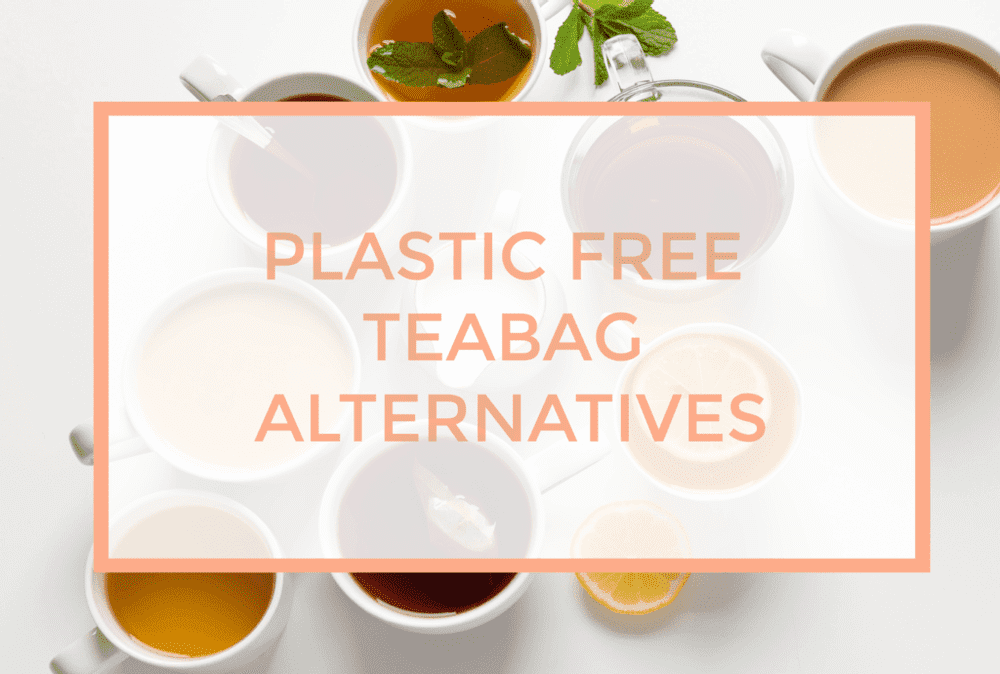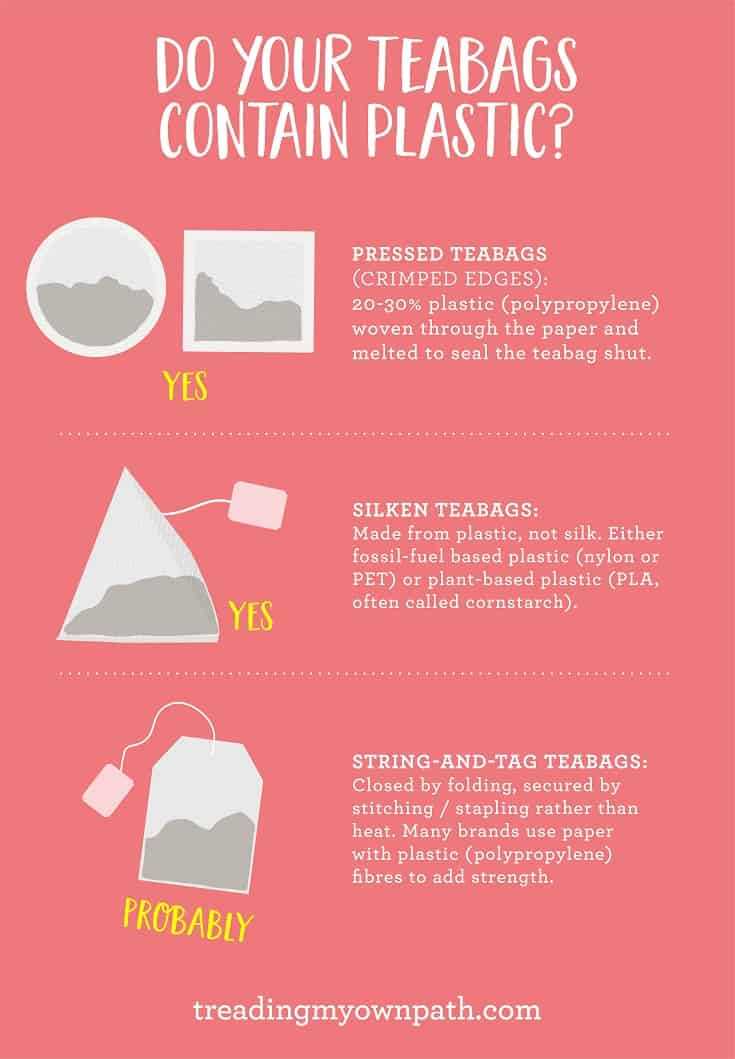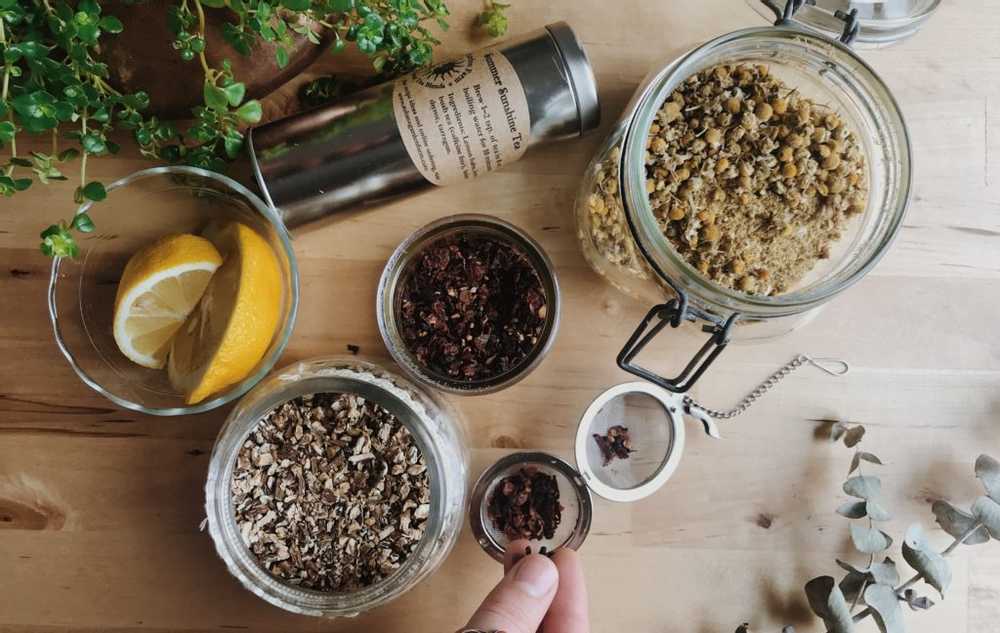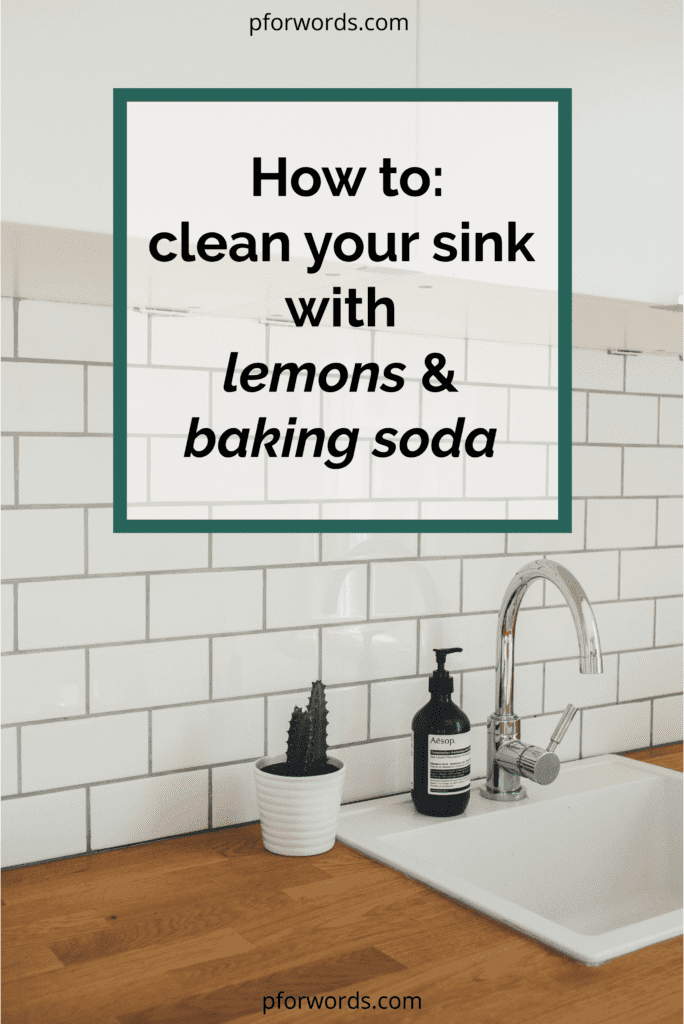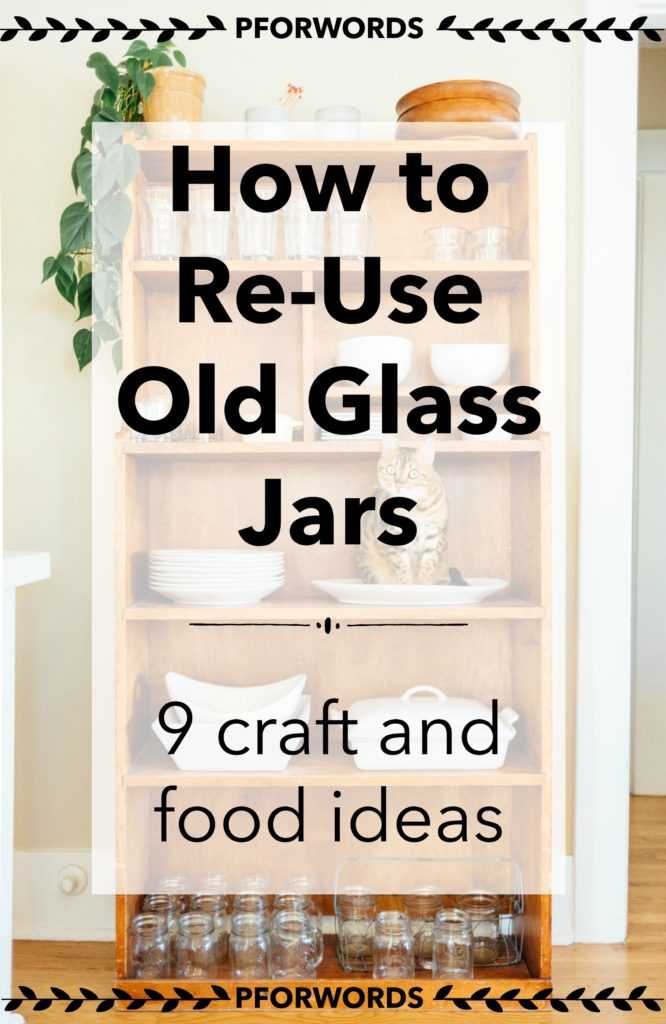How to Have a Plastic-Free Cup of Tea
Teabags: a small thing that I was shocked to learn was made with plastic. Well, at least most of them do.
Why would companies even include plastic in this process?
Short answer, they want to create a sturdy bag that doesn't disintegrate in hot water. So some will weave plastic into the bag itself and others will seal their bags with a plastic strip.
I had been using plastic bags my entire life; I can't imagine how much plastic I had unconsciously used!
So in this post, I'll break down which kinds of teabags have plastic, why using them is possibly detrimental to your health, and plastic free alternatives!
How many tea bags are used per year?
Let's just say, a lot.
The data on the exact number is scarce. But according to the Tea Association of America, Americans consumed over 84 billion servings of tea, or more than 3.8 billion gallons, in 2018.
While it's unconfirmed how much of that is tea bags vs loose leaf, the same article mentioned that the sales of bagged/loose leaf tea segment lagged behind bagged tea.
So, there are a lot of tea bags being consumed in the USA alone.
Types of teabags that contain plastic
I love this post by Treading My Own Path on teabags.
There are three main kinds of teabags.
- Pressed Teabags (Crimped Edges).
- 20-30% plastic woven through the paper and melted to seal the teabag shut
- Silken Teabags
- Made from plastic, not silk. Either fossil-fuel based plastic (nylon or PET) or plant-based plastic (PLA, often called cornstarch).
- String-and-tag Teabags
- Closed by folding, secured by stitching/stapling rather than with heat. Many brands use paper with plastic (polypropylene) fibers to add strength.
If you want to know more about the specifics of these kinds of teabags, I highly recommend Treading My Own Path's post.
Why heating up Teabag plastics' is potentially dangerous
Some plastic-teabag claim their tea bags are safe to heat up in water because they're made from the same material that water bottles and other hard food containers are made out of.
But, in 2009, a study found that single-use PET plastic water bottles were found to have estrogen-mimicking pollutants in them.
Such toxins have been linked to cancer (according to this awesome Atlantic Article).
So I like to stay away from heating up plastics.
RELATED
The correct way to recycle different paper, glass, metals, and more
15 inexpensive ways to live more sustainably
The ultimate guide to shopping the Zero Waste way (that's saved me over \$550)!
Plastic Teabag Alternatives
Have no fear, there are a couple of ways to get your tea fix.
Loose Leaf Tea
You can find this sometimes in the tea aisle in your grocery store. Look for the tins of tea (most of the time on the top shelf). To make sure it's loose leaf, give the tin a shake and listen for loose contents rattling around.
Specialty tea shops like David's Tea also sell loose leaf blends.
Now you might be thinking, Taylor, loose leaf tea is expensive!
And I'll agree to a certain extent. You can find a big box of Lipton tea bags for a fraction of the cost of
But loose leaf tea is not as expensive as it appears. Though, it is hard to compare prices because loose leaf tea is often priced per kilo, whereas teabags are priced per bag. Those big Lipton boxes are not just filled up with leaves, but with teabag material, and the wrapper for each bag.
And what's great about loose leaf is that you can control how many tea leaves you to want to use in your drink, and it's easier to re-steep than a plastic tea bag.
Now once you have your loose leaf tea, how do you actually brew it?
You've got a couple of options:

Mesh ball: easy to scoop out the leaves to be composted

Cotton baggie: easily washable

Over mug tea strainer: easy to scoop out leaves too
Plastic Free Teabags (they do exist!)
There are some teabags out there that are plastic free! I would just recommend making sure the teabags themselves are wrapped in plastic.
Examples of such awesomeness:
Pukka Herbs: their tea bags are free of plastic, tied together with organic cotton and are fully compostable.
Teapigs: they're made from cornstarch and paper and will biodegrade in a council food waste bin but they're not ideal for composting at home as the cornstarch takes a long time to break down.
We Are Tea: they're made from a material called SOILON, which is a bi-product of cornstarch. Although 100% plastic free, the cornstarch isn't great in at home compost piles but can be industrially composted.
Blooming Tea
Ok these are definitely the most expensive alternative, but they look so cool!

Essentially what these are is a bundle of dried tea leaves wrapped around one (or more) dried flowers. When steeped, the bundle expands and unfurls in a process that emulates a blooming flower. You can plop these directly in water, drink, and then easily throw into your compost bucket after.
They do come at a steeper price point, but I treat them as special occasion kinds of teas.
Where you can buy blooming/flowering teas:
- Mountain Rose Herb
- Numi Tea (these probably come in a plastic-lined box to keep the herbs fresh. While that isn't the best, it's better than individually wrapped plastic-lined tea bags.)
Conclusion
Plastic free tea bags do sadly exist and more common that a lot of people realize. But between loose leaf tea, plastic free tea bags, and blooming teas, there are easy solutions to get your tea fix without ingesting heated plastic water.
---

You may also like:
Hi, I'm Taylor
Amateur adult. Zero waste zealot. Personal finance fiend. Spicy food supporter. I’m an mid 20’s gal living in Denver, Colorado. My love of the outdoors has cultivated my zero waste lifestyle, which inadvertently fueled my passion for personal finance. Cheers to everyone interested in lessening their footprint while growing their wallet!
